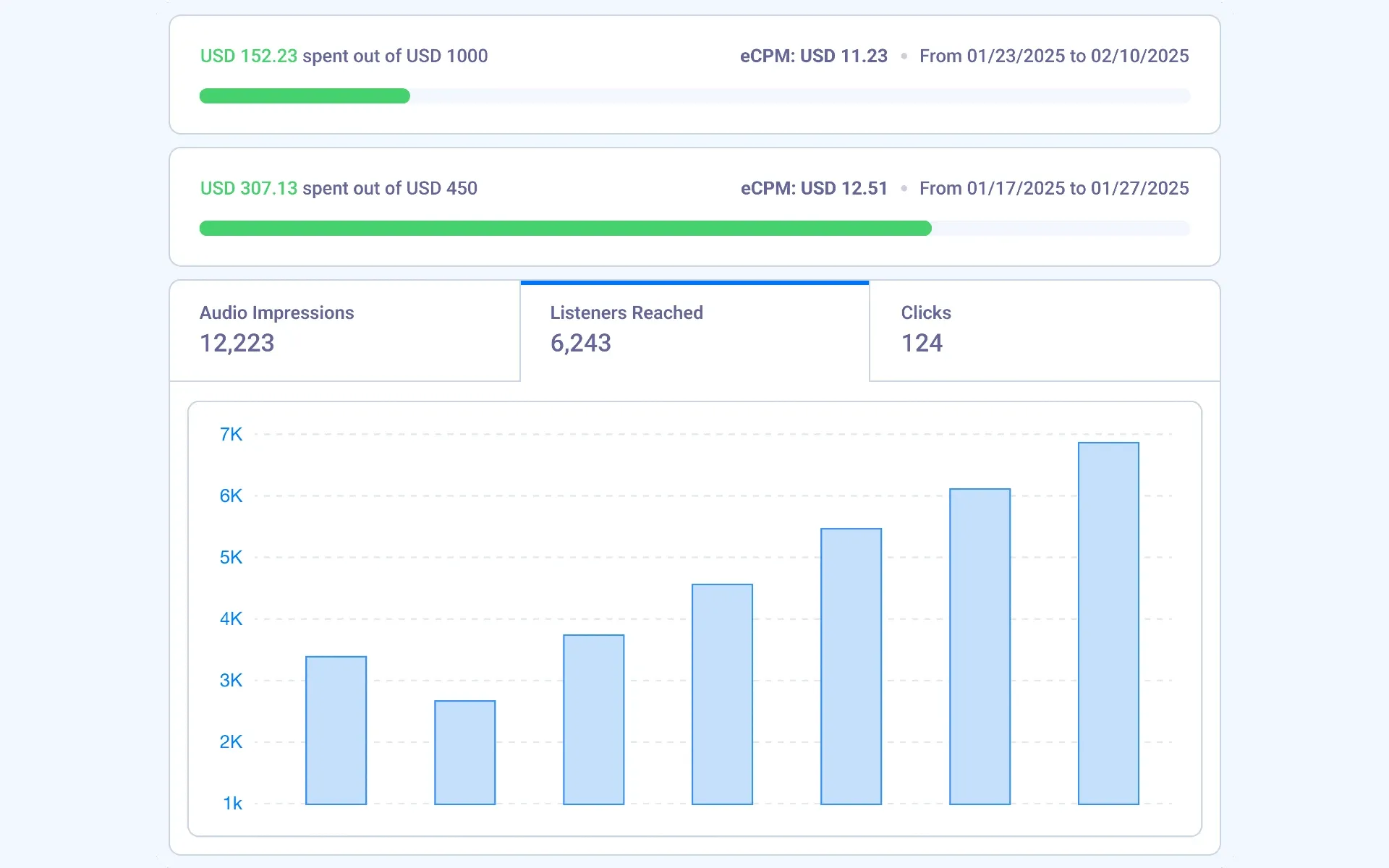AudioGO: Dynamic pricing brings automated bidding to audio advertising
New automated bid-based pricing model from AudioGO promises 20-25% increase in targeted audience impressions for the same budget.

AudioGO launched Dynamic Pricing, an automated bid-based pricing model, on February 3, 2025. According to the announcement published on their blog, this new model aims to optimize advertising spend by automatically adjusting bids to secure targeted audience impressions at competitive rates.
The system operates by automatically managing bids on the backend, removing the need for manual bid adjustments from advertisers. According to Curtis Johnson, Founder of ROI Samurai, quoted in the announcement, "Dynamic Pricing ensures advertisers not only reach their ideal audience but also stretch their budgets further, making audio advertising more impactful than ever."
Beta testing data revealed significant performance improvements. According to AudioGO's internal testing, advertisers experienced a 20-25% increase in targeted audience impressions while maintaining the same budget allocation. This increase in efficiency stems from the system's ability to optimize bid strategies automatically.
The technical implementation focuses on several key performance indicators. The platform's algorithms evaluate multiple factors to determine optimal bid levels, including campaign goals such as website clicks, store visits, reach, and awareness metrics. This automated approach represents a departure from the previous flat CPM (Cost Per Thousand Impressions) pricing model.
Recent campaign data demonstrates the system's capabilities. A campaign running from January 23, 2025, to February 10, 2025, with a budget of USD 1,000 achieved an effective CPM of USD 11.23, resulting in 12,223 audio impressions and reaching 6,243 unique listeners. Another campaign, active from January 17, 2025, to January 27, 2025, with a USD 450 budget, delivered an eCPM of USD 12.51.
The platform's forecasting capabilities provide advertisers with estimates of audience reach, impressions, and expected outcomes based on campaign parameters. These projections update in real-time as targeting criteria, budgets, or campaign durations change, offering insights for campaign optimization.
The introduction of Dynamic Pricing affects both new and existing campaigns differently. Starting February 3, 2025, all new campaigns will automatically utilize the Dynamic Pricing model. However, currently active campaigns will continue operating under the legacy flat CPM pricing structure until completion.
This pricing model operates across multiple audio platforms. The system optimizes campaigns across both streaming services and podcast platforms, adjusting bids based on audience behavior and campaign performance metrics. Integration with major audio platforms enables broad reach across various listener segments.
Technical implementation details reveal sophisticated automation. The backend systems continuously analyze campaign performance data, adjusting bid strategies in real-time to maintain optimal cost efficiency. This automated approach eliminates the need for manual intervention while maintaining campaign effectiveness.
Campaign management remains flexible under the new system. While the pricing model automates bid optimization, advertisers retain control over fundamental campaign parameters including targeting criteria, budget allocation, and strategic objectives. This balance between automation and control allows for customized campaign strategies while benefiting from automated price optimization.
The forecasting system provides detailed metrics. Advertisers can access projections for key performance indicators including audience reach, impression delivery, and expected outcomes. These forecasts update dynamically as campaign parameters change, offering insights for strategic decision-making.
Performance monitoring capabilities include detailed analytics. The system tracks key metrics including audio impressions, listener reach, and engagement metrics such as clicks. This data helps inform future bid optimization strategies and campaign adjustments.
Integration with existing campaign management tools maintains workflow continuity. The Dynamic Pricing model works alongside current campaign creation and management features, including multi-ad campaign creation capabilities and enhanced targeting tools introduced in previous updates.
The technical architecture supports various campaign objectives. Whether focusing on website traffic, physical store visits, brand awareness, or specific reach goals, the system adjusts bidding strategies to align with designated campaign outcomes.
Historical campaign data influences bid optimization. The system analyzes past performance metrics to inform future bidding strategies, creating a continuous improvement cycle for campaign efficiency.
This development follows several other technical updates to the platform. Recent additions include enhanced statistical analysis tools, improved targeting capabilities, and expanded audience segmentation features, as noted in related product announcements from November 2024.

